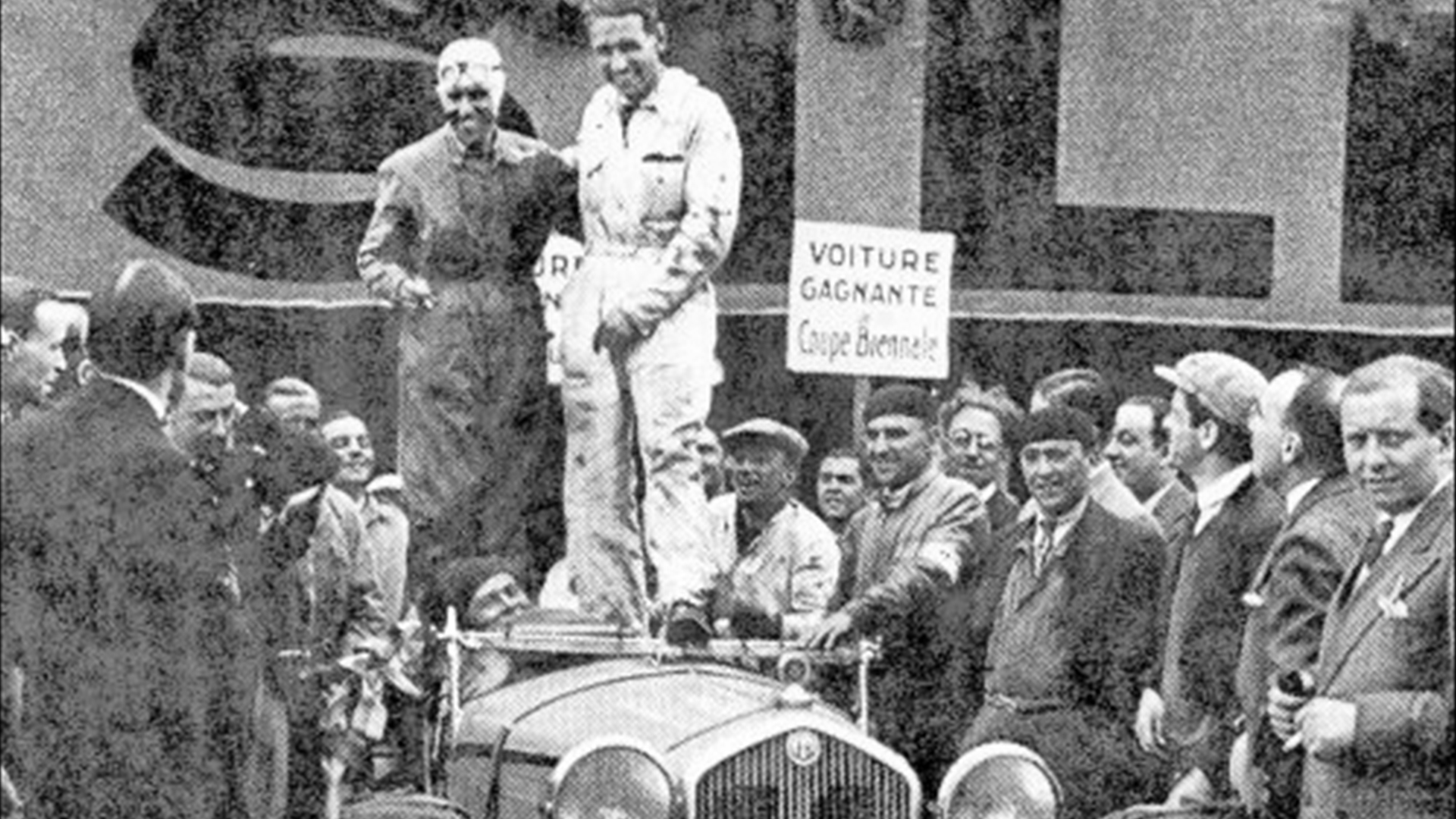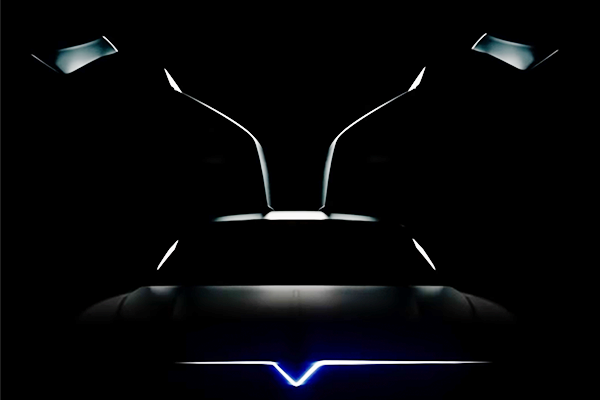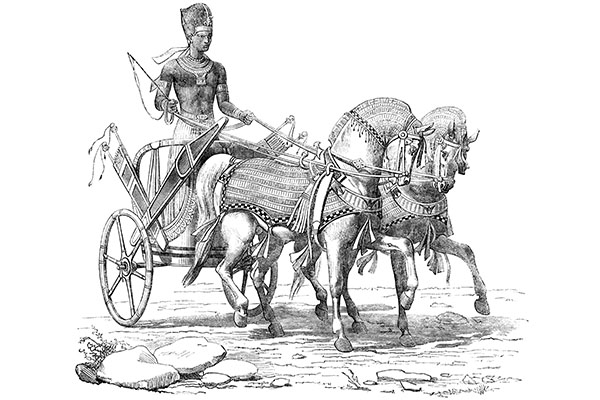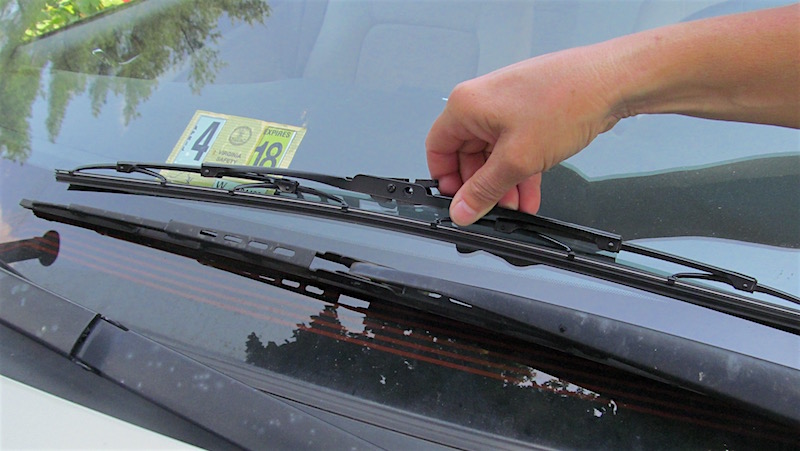With the exception of the Chevrolet Corvette, few American cars are as iconic and distinctive as the Ford Mustang. Even those who aren't “car people" can usually recognize the timeless lines of a '60s-era Mustang. Ford truly hit a home run with that car – it was a masterful marketing coup and created an entire new segment: the “pony car," with a compact size a short trunk, 2 + 2 seating, a long hood and a lot of engine. In other words, if it hadn't been for the Mustang, it's likely that the Camaro, Barracuda and Javelin would never have seen the light of day.
The Mustang's Roots
The early '60s were a rather bland time for American cars. The styling excesses of the '50s were, for the most part, gone. There were big luxury cars from Cadillac and Lincoln, everyday family sedans like Catalinas, LeSabres and Galaxies, and “compacts" like the Valiant, Falcon and Chevy II, and that was about all there was to choose from.
There was a market niche that was crying out to be filled, and Ford's Fairlane Group was on it. Fairlane Group was a forward-thinking team at Ford (led by Lee Iacocca) that was dedicated to new product needs. In '62, the group started working on plans for a new sports car, termed as a “tentative bid to fill a vacuum between Go-Karts and the Corvette." With the Edsel debacle still fresh in their minds, the folks at Ford needed to come up with a winner.
Iacocca's vision was for a sports coupe with room for four people, a floor shifter, an overall length of less than 180 inches, a curb weight of less than 2500 pounds and a price of less than $2500 (about $20k in 2020 dollars). Ford designer John Najjar was an aviation buff and a big fan of the WWII-era P-51 Mustang fighter, and legend has it that that was the origin of the name. But first, there was…
Mustang I Concept

The team began laying out a small, aerodynamic mid-engine sports car that would use a 1.5 liter V4 from Ford's German division. It had a sloping nose, a racing-style plastic windshield, an integral rollbar and advanced features like four-wheel independent suspension, front disc brakes and rack-and-pinion steering. The engine and drivetrain from the front-wheel-drive German Ford Taunus were adapted for the new car, mounted directly behind the cockpit. Its body was riveted to a space frame, and the seats were actually part of the body to enhance rigidity. The automotive press of the time drew comparisons between Mustang I and the Sunbeam Alpine and MG 1600. The folks at Car and Driver took the Mustang I for a spin in 1970 and reported a 0-60 time of under 10 seconds, even with the 90 hp engine.
Two copies of the Mustang I were rolled out, one with a working engine and drivetrain and the other a full-size fiberglass mockup. It debuted at the United States Grand Prix at Watkins Glen in October of '62, and F1 driver Dan Gurney tore around the track at 120 mph, which of course amplified the buzz about the new car. With a curb weight of under 1600 lbs and a 109 hp engine, it's not surprising that the Mustang 1 was a strong performer.
In an unusual move that pointed the way to Ford's marketing strategy for the production Mustang, Mustang I toured college campuses, with college students serving as the focus group. Mustang I was deemed too complex to ever enter production; the one remaining example now sits in the Henry Ford Museum in Dearborn. Here's a closer look at the Mustang I's styling, and a fascinating look at the development process in this Ford-produced promotional film.
Mustang II Concept

Source | Bzuk | Wikimedia Commons
What followed the Mustang I on the show-car circuit was a lot closer to the final iteration of the four-seater Mustang. Its body lines and profile were similar, except for a more streamlined nose and sculpted headlights, and it cadged various suspension and platform parts from the Falcon and Fairlane. Fabricated by Dearborn Steel Tubing, the steel body was five inches longer than the production car and featured buried, integral headlight treatments. It had the aircraft-style instrument cluster that made its way to the production version, and again debuted at Watkins Glen (with a 271 hp Ford 289 c.i. V8). Mustang II was saved from the crusher and now resides at Detroit Historical Society.
First-Generation Mustang

After teasing and tantalizing the car-buying public, the Ford Mustang was rolled out mid-year as a '64 ½ model (the midyear debut was a pretty unusual move in itself, designed to disrupt, make headlines and draw attention). Amazingly, the cycle from drawing board to production was only 18 months, and the incorporation of Falcon and Fairlane mechanicals helped simplify design, cut costs and ease the learning curve for technicians.
On April 16 of '64, the day before the Mustang was to be released, Ford ran commercials at 9:30 pm on all three major television networks. Sure enough, the following day the showrooms were swamped with buyers. A Dallas Ford dealership had 15 prospective buyers all bidding for the same car, and the eventual buyer camped out in the parking lot in his car to prevent his new Mustang from being bought out from under him.
Ford's projections were to sell 100,000 units in the first year. By year-end, sales figures were well over 260,000 and by April of '65, Ford had sold 418,812 Mustangs. It was a phenomenal success the likes of which the automotive industry hadn't seen before. In keeping with Iacocca's idea and Ford's slogan that the Mustang would be “the car designed by you," the car was available with a wide range of interior and drivetrain options. Buyers could choose from a wide range of colors and could order a Mustang that was as plain, comfortable, economical or fast as they wanted.

1964 World's Fair For Mustang Introduction | Ford
The new Mustang came standard with Ford's 101 hp 170 c.i. straight-six, but could also be had with the 165 hp 2-barrel 260 c.i. V8, a 210 hp 4-barrel 289 c.i. V8 or a strong-running 271 hp 289 with a 4-barrel carburetor, dual exhaust and solid lifters. Buyers could order a three-speed or four-speed manual transmission or automatic, and several rear end ratios to choose from. Never mind that the Mustang's stodgy Falcon underpinnings meant fairly sloppy and squirrelly handling and an unforgiving buckboard ride—the Mustang's image screamed “sporty."
Inside, there was “wall-to-wall" carpeting, bucket seats (inexplicably, it was also offered with an optional bench seat in front), a sports car-type steering wheel, floor mounted shifter and console and full headliner – all standard, and rather lavish for the mid-'60s. In '65, a fastback model was introduced to go along with the hardtop coupe and convertible. The fastback was to become the platform for Carroll Shelby's legendary GT350 package, which helped boost the Mustang's performance image even more. Not much changed for the '66 model year, except for the introduction of the Mustang GT package (stripes, interior bits, driving lights in the grille).

For '67, the Mustang saw its first facelift and grew by 2.7" in length and .5" in height. The familiar three-bar vertical taillights were now in a concave rear valance, and the front end got a little more aggressive contour. The 'Stang got a little wider too, which allowed for the first big-block V8 in the model—a 320 hp 390 c.i. engine that offered some serious performance potential. New options included a tilt-away steering wheel, power disc brakes, an overhead console, new interior trim and an all-new transmission that allowed automatic or manual shifts. In addition, the 289 V8 was replaced by the all-new 302 c.i. engine.

Source | Wikimedia Commons
The '69 model year saw the Mustang continue to grow by another four inches in length, and Ford went all-out on performance by introducing the Boss 302 and Boss 429 options. The Boss 302 had a 290 hp engine and 4-speed transmission, while the Boss 429 had the “semi-hemi" engine that was designed for NASCAR, conservatively rated at 375- 390 hp. The Boss 302 Mustang was capable of a mid-14-second 1/4 mile at about 97 mph, which is pretty respectable for a car that tipped the scales at 3500 pounds.
The Mach 1 package also entered the market, with a combination of a big V8, extra sound deadener and a more luxurious interior. The Boss and Mach 1 models showed they meant business with a flat-black hood, hood tie-down pins, functional hood scoop, dual exhausts, dual sport mirrors and more.

Source | Wikimedia Commons
Unfortunately, up through the '73 model year the Mustang got bigger, fatter (by 800 pounds), plusher and slower. The 200 c.i. inline-six was dropped, as were the 428, Boss 302 and Boss 429 engines. New for '71 were the Boss 351, 429 and Ram Air 429 engines, with the Boss 351 weighing in at 330 hp and both 429 engines producing 370 hp. Thanks to tougher insurance underwriting, emissions control and government regulations, muscle cars were on their way out by the early '70s, and sales for all Mustangs were dropping. Buyers weren't wild about the Mustang's size and styling, and complained about the bomb shelter-like visibility in the SportsRoof models, with their near-flat rear roofline.'73 ended up being the last year for the first-generation 'Stang. As Iacocca put it, “The Mustang market never left us, we left it."
Second Generation – the Mustang II

Source | Wikimedia Commons
For the '74 model year, Iacocca insisted on a smaller, more fuel-stingy edition of the Mustang. First drafts were based on the Maverick, but the Mustang II ended up sharing more mechanicals with the Pinto (another Iacocca design). The new Mustang II was well-received, with echoes of the '65 model in its styling and a more manageable size. Unfortunately, it didn't live up to the hype.
Initially, it was available with the wheezy 2.3L four-cylinder from the Pinto or the 2.8L German-made Cologne V6 from the Mercury Capri, both of which were agonizingly slow and short on power. The 302 V8 came along for model year '75, and was presented in the “King Cobra" model (complete with circus-wagon decal graphics) for '78. Even the V8 was choked down to about 120 hp, though.
Worse yet, Mustang II's soon showed plenty of problems with rust, atrocious build quality, steering defects and other issues. First-year sales were strong out of the gate, but dropped with every subsequent year. And of course it had the Pinto's jittery handling, weird proportions, cramped interior, plasticky quality and fuel tank issues. Put it all together and you have a Mustang with the speed and drivability of a lawn tractor.
Today, the Mustang II is sometimes poached for its front suspension parts (if you can still find one intact), but mainly it's remembered as a relic of the 70s along with disco and Fat Elvis. It may have been a Shetland pony followup to a generation of thoroughbreds, but at least the Mustang II kept the name alive for a few years.
Third Generation – Fox Body Mustangs

Anyone remember the Ford Fairmont/Mercury Zephyr and the 80s-era LTD? That was the basis for the third generation Mustang, commonly called the Fox platform. The look was entirely different, with aero styling that foreshadowed other 80s Ford products, and the new Mustang brought performance back to the table again. Engines included a turbocharged version of the 2.3L 4-cylinder, a 3.3L straight-6, a 3.8L V6 for '83 and a smaller 4.2L V8. Soon, a high-output version of the 302 V8 came along as well as a police package.
The Fox-body was a transitional model, though, and by the mid-80s a new Mustang was in the works. Interestingly, for the first few years the Fox-body 'Stang had a badge-engineered stablemate branded as the Mercury Capri, reviving the name of an odd German-import Mercury that never quite found a niche with the public. Amazingly, Ford considered a variant of the Mazda MX-6, a front-wheel-drive coupe with no V8 option. There was considerable pushback from enthusiasts, and Ford scotched the idea and instead released the car as the Ford Probe in '89.
Fourth Generation – “New Edge"

Source | IFCAR | Wikimedia Commons
While it was still based on an updated iteration of the Fox platform, the '94 Mustang had a complete overhaul of sheetmetal. The new bodywork was aerodynamic and slippery and had a pretty close family resemblance to the Thunderbird and other Ford models. It touched on the '65 Mustang a bit with a louver treatment on the rear quarter panels, and underneath Ford made an effort to enhance the car's handling and cut noise/vibration/harshness factors. By the 90s, Ford was doing a full-on effort to improve quality control and product design, and it showed.
The front suspension got MacPherson struts and longer lower control arms; in back, there was now a four-bar link solid axle. Four-wheel disc brakes were now standard, with ABS as an option. The interior was thoroughly updated with the curvy contours of other Ford models, as well as power accessories in a Preferred Equipment package.

1995 Mustang Convertible | Ford
In stock form, you'd get a 145 hp 3.8L V6 with your choice of five-speed manual or AOD four-speed automatic. The Mustang GT was brought back in '94, with a 215 hp version of the 5.0L V8, which scooted the car to 60 mph in under seven seconds and ran through the quarter-mile in about 15 seconds—only a bit slower than a 90s Chevy Camaro. The GT also got a stiffer suspension and 3.08:1 rear end, which was impressive enough for Motor Trend to name it as Car of the Year.
Ford's Special Vehicle Team goosed the Mustang a little more with the Cobra, which had goodies like a new intake manifold, cam, heads and fuel injectors. The 5.0L V8 was finally discontinued in '96, replaced by a 305 hp version of the 4.6L V8. Aside from some styling revisions, the New Edge Mustang continued without a lot of changes through '04 and was a popular platform for third-party packages from Shelby, Roush, Saleen and Steeda. Even 20-plus years later, these hard-charging 90s Mustangs are still desirable to enthusiasts.
Fifth Generation – Retro-Futurism

A sketch showing the evolution of the fifth-gen Mustang | Ford
By '05, the Mustang was looking a little bland and dated. It was time for a new Mustang to pick up the torch, and the new pony called to mind '60s-era Mustangs more than just a little bit. The new model was low and sleek, with a drag coefficient that was seven percent less than the previous generation. Under the hood was a 210 hp 4.0L V6, with a 300 hp aluminum block version of the 4.6L modular V8 as an option. The new engine lineup featured electric power steering and twin independent variable cam timing, among other advances. A 305 hp version of the 3.7L V6 was introduced, yielding an incredible 31 mpg on the highway. Optional engines could raise as much as 662 hp in Shelby or Boss packages, and the 5.0L V8 was reintroduced.

2005 Ford Mustang Interior | Ford
Today, we're in the sixth generation of that iconic muscle car and it's a showcase of Ford's technical prowess. These days the 2.3L Ecoboost four-cylinder squeezes out an astonishing 310 hp and the 5.0 V8 gets 460 hp, with both engines mated to a ten-speed automatic transmission. Features like a backup camera, automatic braking, adaptive cruise control and accident avoidance are available, making the Mustang a state-of-the-art muscle car.
What's Next?

How does 0-60 in just over 3 seconds sound? | Mach-E GT Performance Edition | Ford
What's next for the Mustang? Well…the Mach-E is expected to go on sale in late 2020. It'll be an all-electric four-door SUV variant, with either a rear-motor RWD or dual-motor AWD setup. Two powerplants will put out 255 hp or 332 hp, with a revamped version of the powertrain in the Focus and Escape. Look for features like:
- Ford's SYNC-4 system, which allows wireless updates to the car's software
- Touchscreen and rotary dial for most of the car's systems
- Charging through an AC home charger or DC fast-charger
- Trunk in the rear and another trunk under the “hood"
- Buttons that pop the doors open, with the option of using a smartphone as a “key"
- 0-60 time of under six seconds
- Range of 210-300 miles, depending on drivetrain

Tailgaiting? Pop the frunk! | Mach-E | Ford
Now whether the Mach-E is truly any kind of Mustang is up for debate, but it surely represents a great deal of technical prowess and development on the part of Ford's team.
The Ford Mustang has been around well over 50 years now, and Lee Iacocca's brainchild car has come a long way over the decades. It's a pillar of the Ford lineup and an American icon, and it isn't going away anytime soon.








